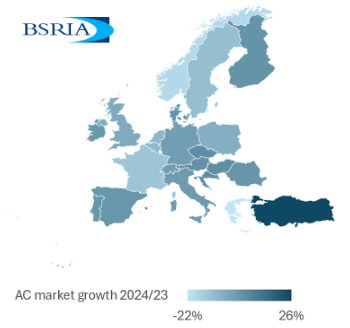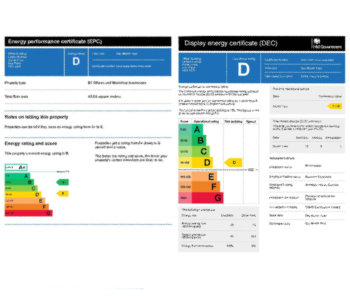Local Plan Route Mapper and toolkit

|
| The Local Plan Route Mapper & Toolkit from the Planning Advisory Service (PAS) will give practical advice and tools to undertake a local plan review, project plan, manage and carry out the update of a local plan. |
The Local Government Association writes:
The NEW PAS Local Plan Route Mapper & Toolkit is freely available for LPAs to use to undertake a review and update of local plan policies.
All local planning authorities (LPAs) are required to review and, if necessary, update their local plan policies within five years of adoption, if not sooner. The Local Government Association's Planning Advisory Service (PAS) has produced advice and a toolkit to provide guidance through the process of reviewing and, where needed, updating local plans, whether this is a partial or full update. But PAS has gone one step further and has taken the opportunity to provide a resource which covers all the stages of plan-making. The aim is to provide LPAs with resources which allow them to demonstrate that their local plan review has been undertaken in a robust and objective way. Also, if updating plans, it provides an approach which is efficient and effective so that they have more time to focus on developing a quality plan that they can be proud of.
The advice (in the form of a Local Plan Route Mapper) and the toolkit replace PAS's legal compliance and soundness checklists and provide an up-to-date and comprehensive resource to help LPAs navigate through the local plan review and update process. The PAS would strongly encourage LPAs to read the Route Mapper before they start using the toolkit itself as it includes helpful support on the different steps of plan-making as well as case studies. Also included are top-tips from industry experts, all of whom have practical local-plan-making experience.
The toolkit has been piloted with a number of local authorities to make sure that it is robust and to make sure that it can be used whatever the plan-making circumstances may be. It comes in four parts covering the following:
- TOOLKIT PART 1 LOCAL PLAN REVIEW OCT 2019
- TOOLKIT PART 2 LOCAL PLAN CONTENT OCT 2019
- TOOLKIT PART 3 LOCAL PLAN PROCESS OCT 2019
- TOOLKIT PART 4 LOCAL PLAN SOUNDNESS QUALITY ASSESSMENT
Parts 2, 3 and 4 of the toolkit should be used as a continual ‘sense-check’ as you progress through the various stages of the plan-making process rather than something to use at the point of submitting your plan for examination – if there is anything that you have missed at that stage it may be too late to rectify.
PAS wants to make sure that the Route Mapper and toolkit are seen as a ‘live’ resource and one that continues to provide a practical source of advice for local planning authorities. Part of this includes sharing best practice so if LPAs have any ‘top tips’ or case studies that they can share or any questions about using the toolkit, PAS would like to hear from them either via a specific PAS Discussion forum (link to be added) or via an email to [email protected] .
The Route Mapper & Toolkit is designed for LPAs to use themselves but PAS can work with local authorities to use it as a ‘critical friend’ or advisor from our team of experienced local authority peers or our team of consultants.
[edit] About this article
This article was provided by the Institute of Historic Building Conservation (IHBC) and previously appeared on its website in December 2019 under the title 'Local Plan Route Mapper & Toolkit: Reviewing and updating local plan policies'. It can be accessed HERE.
Other articles by IHBC on Designing Buildings Wiki can be accessed HERE.
[edit] Related articles on Designing Buildings Wiki
- Archaeology and construction.
- Building Preservation Notice.
- Conservation area.
- Conservation officer.
- Designated areas.
- Enterprise and Regulatory Reform Act 2013 and listed buildings.
- Heritage partnership agreement.
- Historic England.
- Institute of Historic Building Conservation.
- Listed building.
- Planning authority duty to provide specialist conservation advice.
- Scheduled monuments.
- Sites of Special Scientific Interest.
- What data should be incorporated into Historic Environment Records.
Featured articles and news
Shortage of high-quality data threatening the AI boom
And other fundamental issues highlighted by the Open Data Institute.
Data centres top the list of growth opportunities
In robust, yet heterogenous world BACS market.
Increased funding for BSR announced
Within plans for next generation of new towns.
New Towns Taskforce interim policy statement
With initial reactions to the 6 month policy update.
Heritage, industry and slavery
Interpretation must tell the story accurately.
PM announces Building safety and fire move to MHCLG
Following recommendations of the Grenfell Inquiry report.
Conserving the ruins of a great Elizabethan country house.
BSRIA European air conditioning market update 2024
Highs, lows and discrepancy rates in the annual demand.
50 years celebrating the ECA Apprenticeship Awards
As SMEs say the 10 years of the Apprenticeship Levy has failed them.
Nominations sought for CIOB awards
Celebrating construction excellence in Ireland and Northern Ireland.
EPC consultation in context: NCM, SAP, SBEM and HEM
One week to respond to the consultation on reforms to the Energy Performance of Buildings framework.
CIAT Celebrates 60 years of Architectural Technology
Find out more #CIAT60 social media takeover.
The BPF urges Chancellor for additional BSR resources
To remove barriers and bottlenecks which delay projects.
Flexibility over requirements to boost apprentice numbers
English, maths and minimumun duration requirements reduced for a 10,000 gain.
A long term view on European heating markets
BSRIA HVAC 2032 Study.
Humidity resilience strategies for home design
Frequency of extreme humidity events is increasing.
National Apprenticeship Week 2025
Skills for life : 10-16 February
























